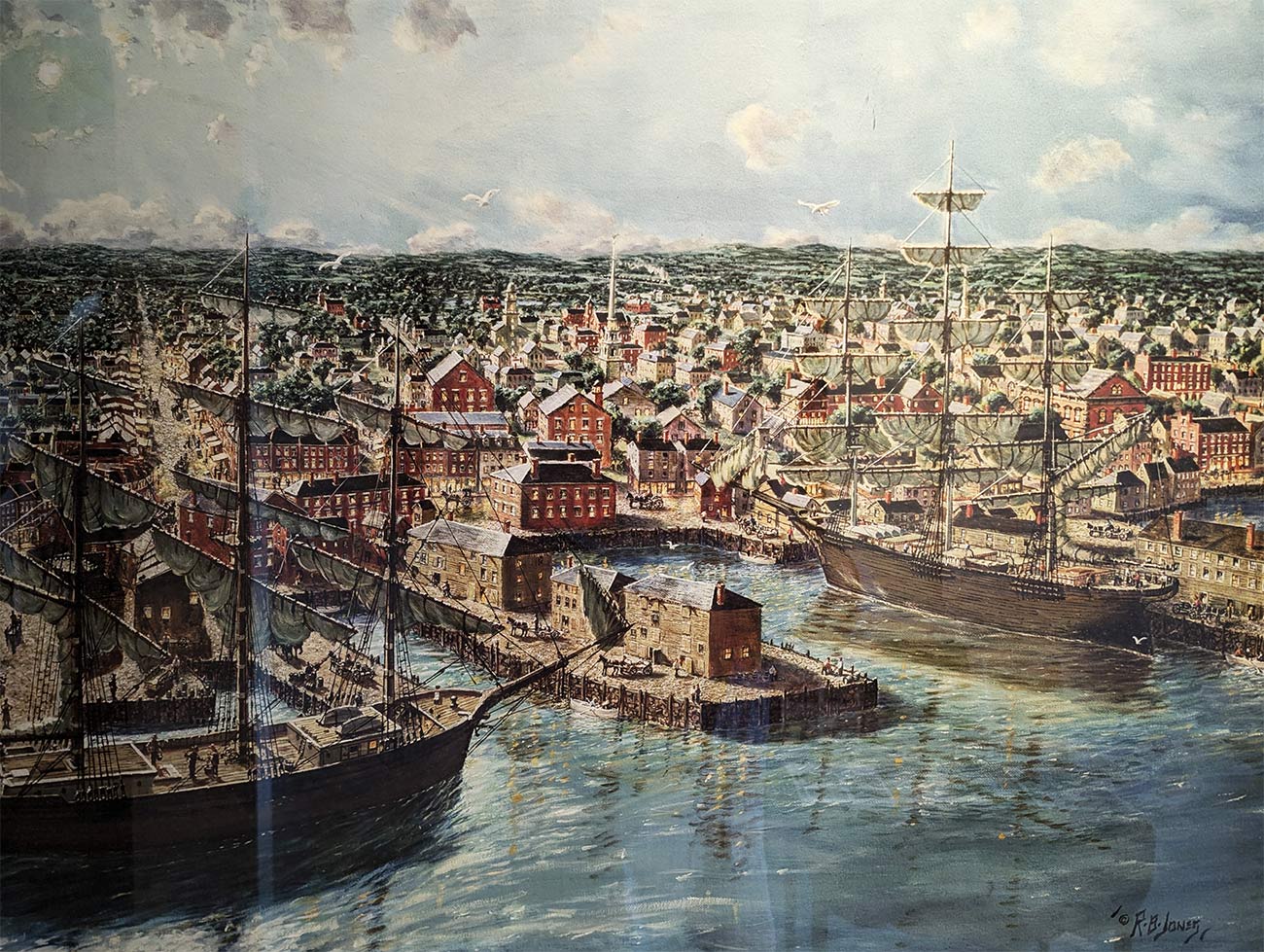Newburyport in the 19th-Century
During the 1830s and 40s, the town’s fortunes began to improve due, as always, to her waterfront location. Some older industries were revived, specifically fishing and shipbuilding, the latter rejuvenated by the rise of the clipper ship, invented locally by noted ship designer Donald McKay in 1842. And new industries, particularly large, steam-powered mills, took advantage of merchant shipping to import raw materials and export finished goods.

The last Massachusetts-built square-rigger, the Mary L. Cushing, was built in 1883, after which the Currier shipyard was closed for good, ending the era of merchant sail. Textile production waned, but other industries, such as coal, and shoe production, thrived. The city expressed its civic pride, with the improvement of Atkinson Common, and the erection of the William Lloyd Garrison statue in Brown Square. But Newburyport closed out the 19th century much the same way it had opened – with a slow decline in its fortunes, which would last well into the 20th century.

Plan Your Visit
Plan Your Visit
- Museum Hours
Sunday: 12 pm - 5 pm
Closed Monday
- Tickets
Free for NBPT residents, kids under 12, and museum members
Cost of admission includes access to the Discovery Center.
- Parking
City parking is available adjacent to the museum. View parking lot directions.

250th Anniversary - American Revolutionary War Newburyport
